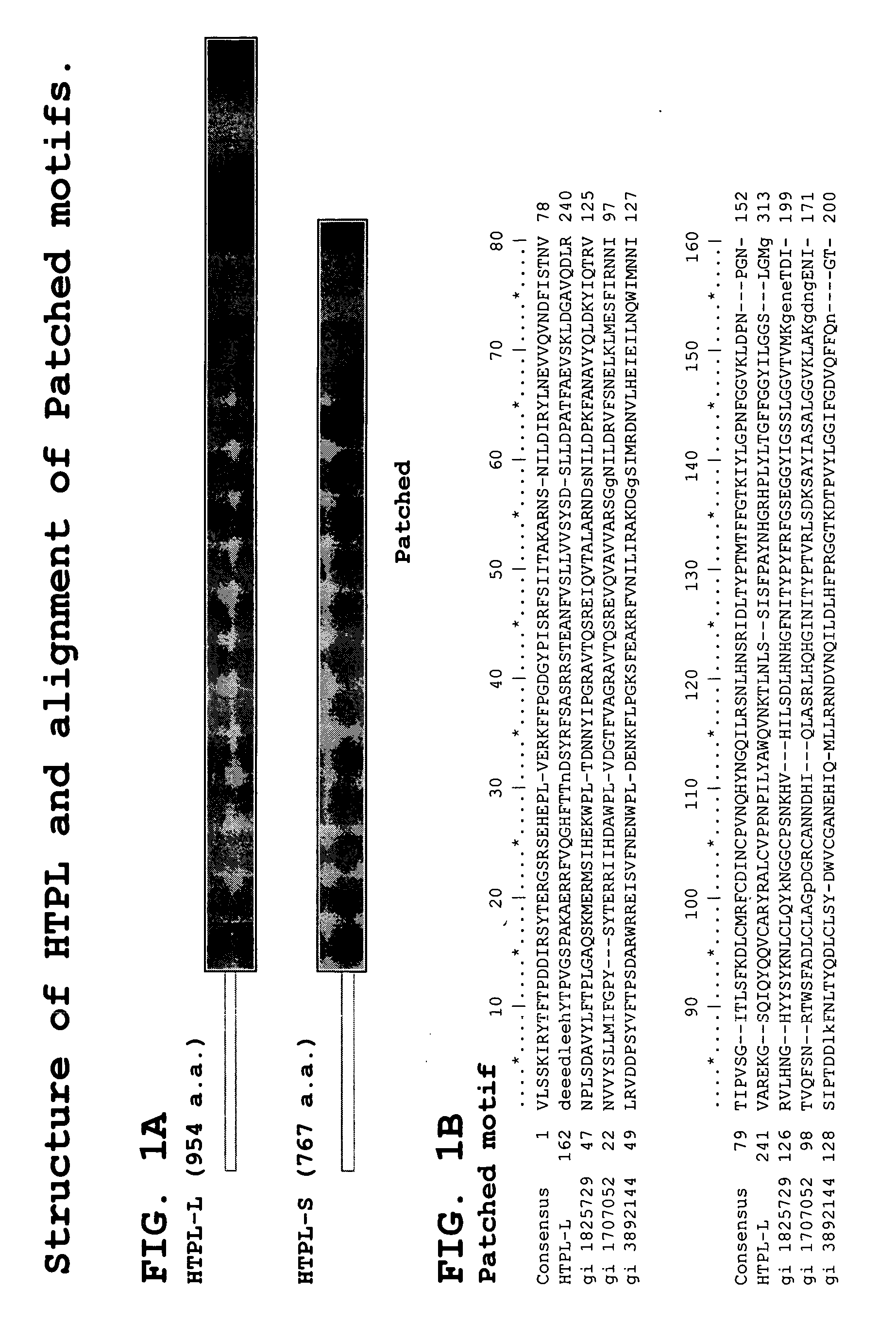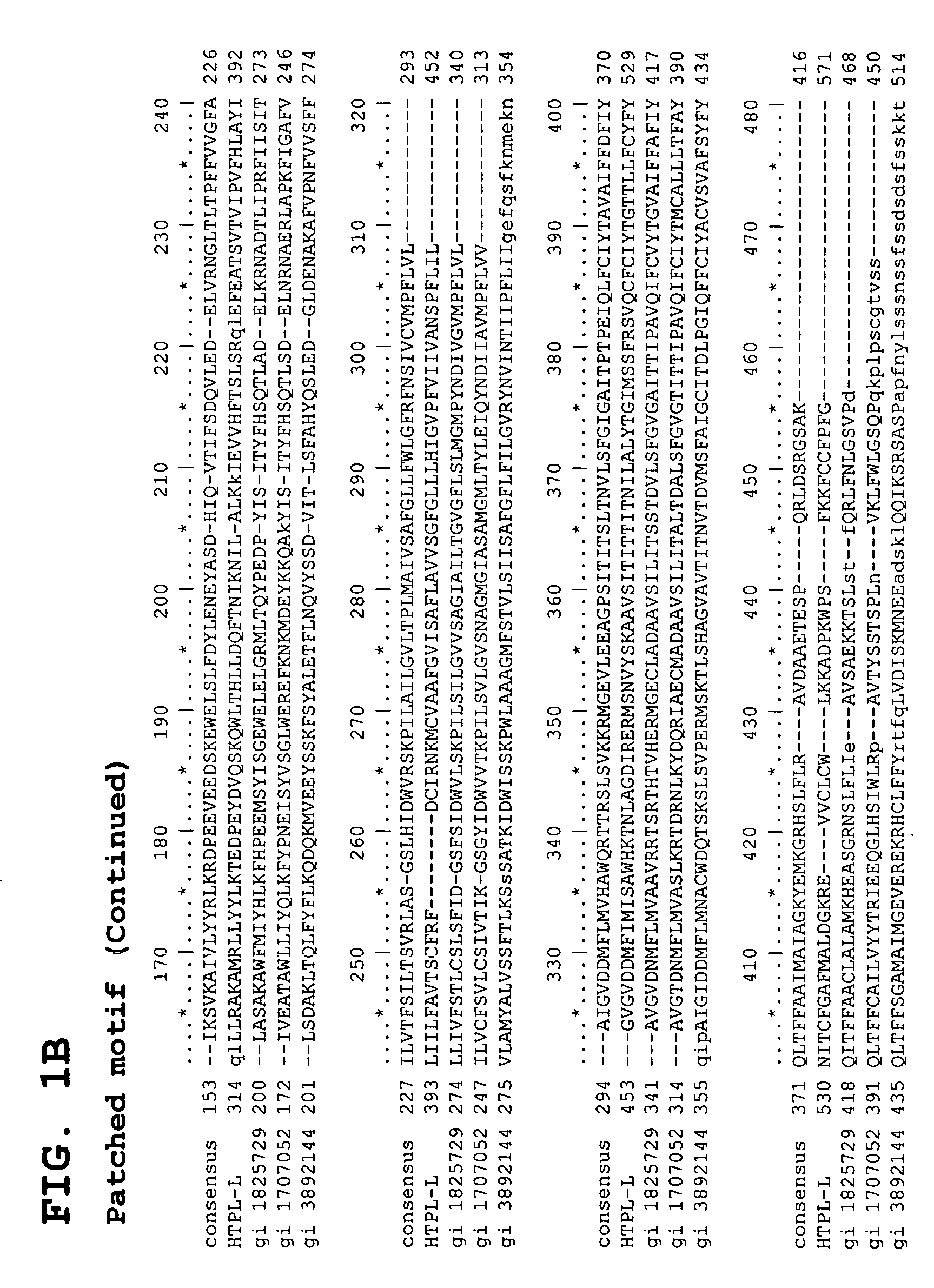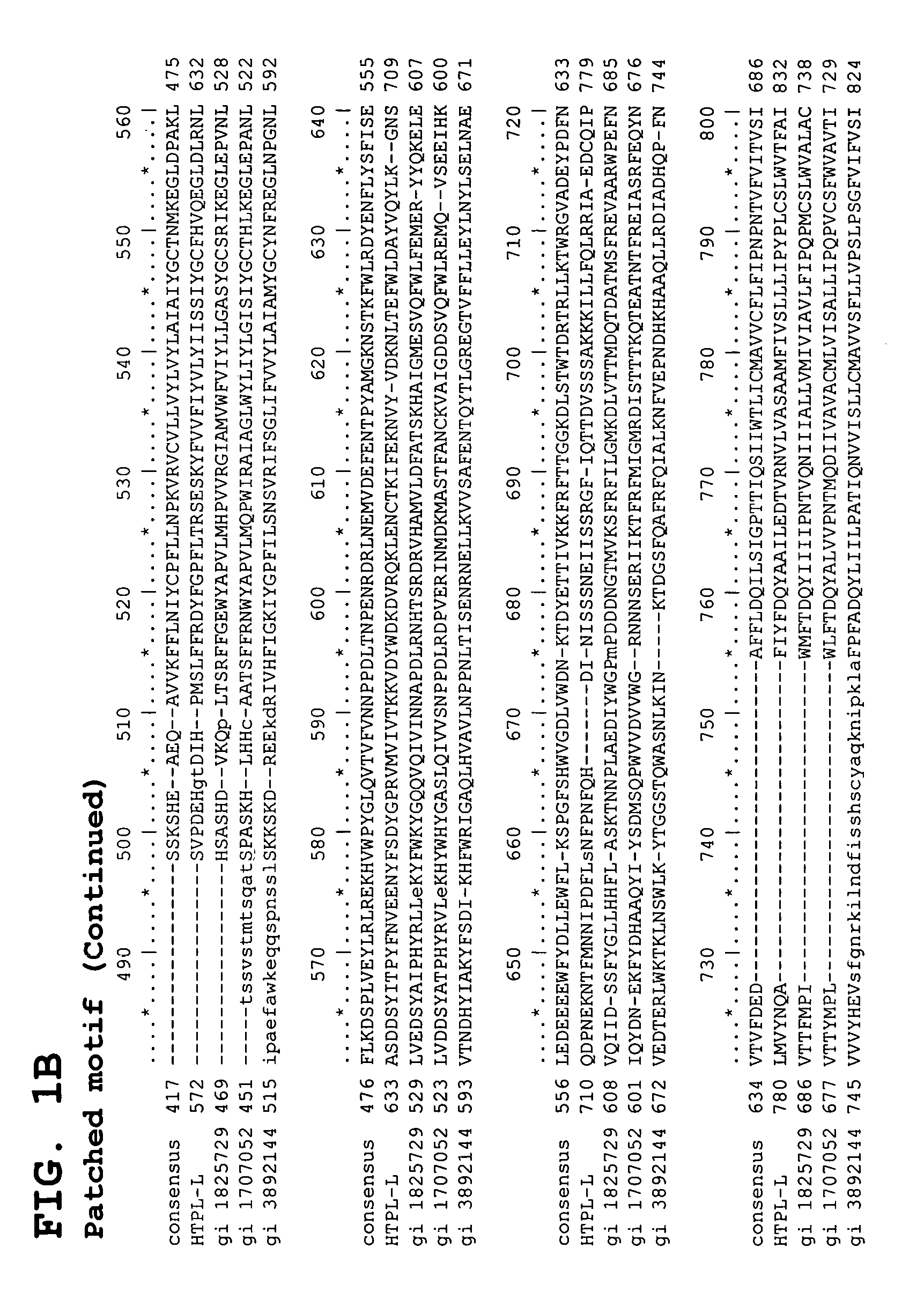Human testis expressed patched like protein
- Summary
- Abstract
- Description
- Claims
- Application Information
AI Technical Summary
Benefits of technology
Problems solved by technology
Method used
Image
Examples
example 1
Identification and Characterization of cDNAs Encoding HTPL Proteins
[0511] Predicating our gene discovery efforts on use of genome-derived single exon probes and hybridization to genome-derived single exon microarrays—an approach that we have previously demonstrated will readily identify novel genes that have proven refractory to mRNA-based identification efforts—we identified an exon in raw human genomic sequence that is particularly expressed in human adrenal, adult and fetal liver, bone marrow, brain, kidney, lung, placenta and prostate.
[0512] Briefly, bioinformatic algorithms were applied to human genomic sequence data to identify putative exons. Each of the predicted exons was amplified from genomic DNA, typically centering the putative coding sequence within a larger amplicon that included flanking noncoding sequence. These genome-derived single exon probes were arrayed on a support and expression of the bioinformatically predicted exons assessed through a series of simultane...
example 2
Preparation and Labeling of Useful Fragments of HTPL
[0540] Useful fragments of HTPL are produced by PCR, using standard techniques, or solid phase chemical synthesis using an automated nucleic acid synthesizer. Each fragment is sequenced, confirming the exact chemical structure thereof.
[0541] The exact chemical structure of preferred fragments is provided in the attached SEQUENCE LISTING, the disclosure of which is incorporated herein by reference in its entirety. The following summary identifies the fragments whose structures are more fully described in the SEQUENCE LISTING: [0542] SEQ ID NO: 1 (nt, full length HTPL-L cDNA) [0543] SEQ ID NO: 2 (nt, cDNA ORF of HTPL-L) [0544] SEQ ID NO: 3 (aa, full length HTPL-L protein) [0545] SEQ ID NO: 4 (nt, full length HTPL-S cDNA) [0546] SEQ ID NO: 5 (nt, cDNA ORF of HTPL-S) [0547] SEQ ID NO: 6 (aa, full length HTPL-S protein) [0548] SEQ ID NO: 7 (nt, (nt 1-2021) portion of HTPL-L) [0549] SEQ ID NO: 8 (nt; 5′ UT portion of SEQ ID NO: 7) [055...
example 3
Expression Analysis of HTPL by RT-PCR
[0575] The Advantage 2 PCR amplification kit and PCR cDNA of different human tissues were obtained from Clontech Laboratories Inc. (Palo Alto, Calif.). The PCR parameters were set-up as follows, 94° C. 15 seconds; 59° C. 30 seconds; 72° C. 40 seconds for 35 cycles. The PCR composition is as follows: 0.5 ul of cDNA; 2.5 ul of 10× amplification buffer; 0.5 ul dNTP (10 M); 1 ul of primer pairs (10 M each; SEQ ID NO: 4803 and SEQ ID NO: 4804); 0.5 ul of Advantage polymerase Mix in 25 ul reaction mixture. The amplified DNA products were resolved in 1.2% agarose gel in TAE buffer. The gel was scanned using Typhoon™ Imaging System (Amersham Biosciences). HTPL is strongly expressed in testis, weakly expressed in skeletal muscle, bone marrow, lung, liver, kidney, colon and placenta, while hardly expressed in brain, heart and uterus (FIG. 5).
PUM
| Property | Measurement | Unit |
|---|---|---|
| Fraction | aaaaa | aaaaa |
| Fraction | aaaaa | aaaaa |
| Fraction | aaaaa | aaaaa |
Abstract
Description
Claims
Application Information
 Login to View More
Login to View More - R&D
- Intellectual Property
- Life Sciences
- Materials
- Tech Scout
- Unparalleled Data Quality
- Higher Quality Content
- 60% Fewer Hallucinations
Browse by: Latest US Patents, China's latest patents, Technical Efficacy Thesaurus, Application Domain, Technology Topic, Popular Technical Reports.
© 2025 PatSnap. All rights reserved.Legal|Privacy policy|Modern Slavery Act Transparency Statement|Sitemap|About US| Contact US: help@patsnap.com



